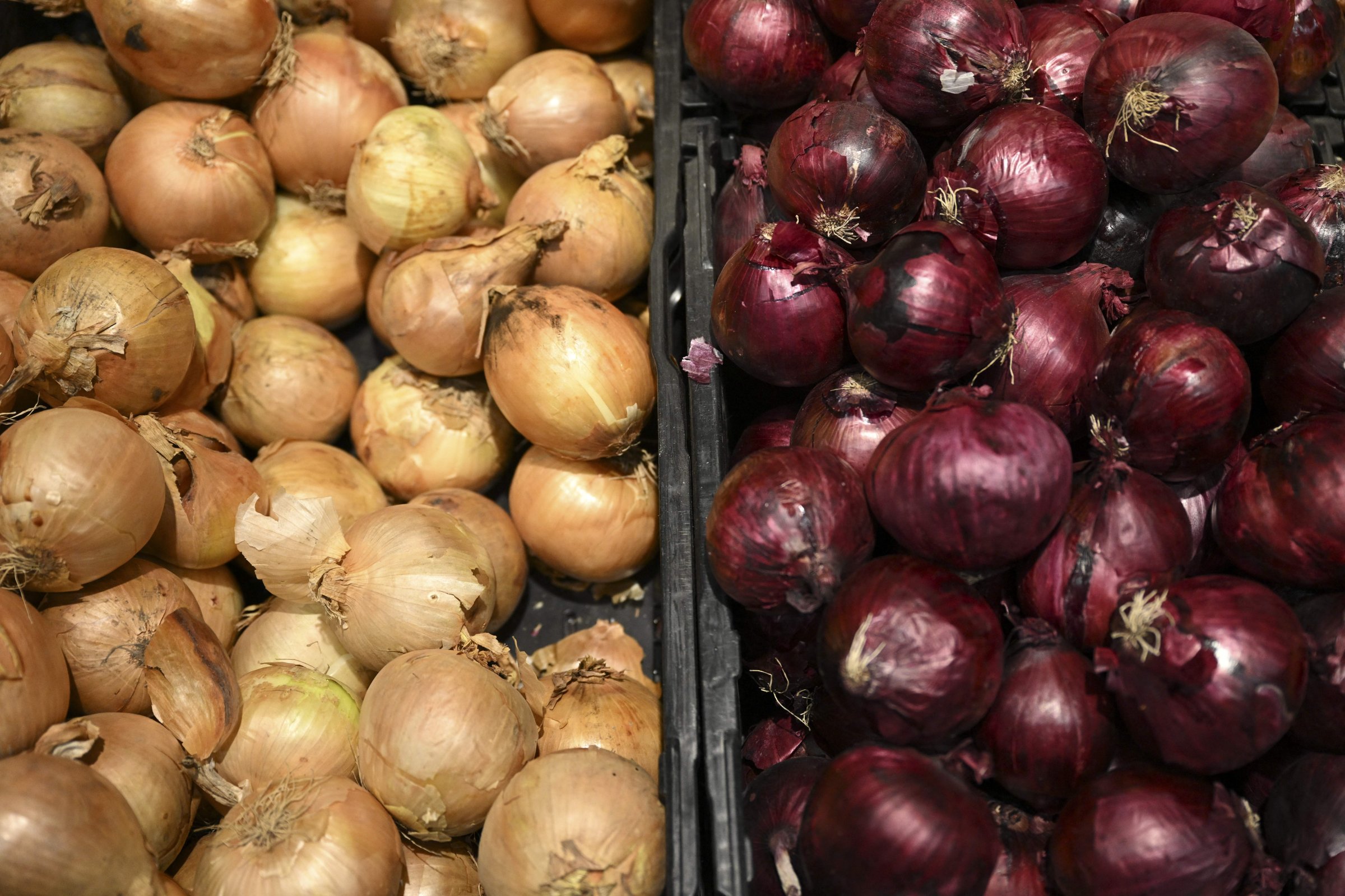
Soaring prices of onions in the Philippines led agriculture authorities to announce this weekend that the country would have to resort to importing around 22,000 tons of the vegetable by March, to augment dwindling domestic supply and arrest rising costs.
Onion is a staple of the Southeast Asian nation’s local cuisine—often coupled with garlic as a base of many dishes. The country’s average monthly demand for the vegetable is around 17,000 metric tons.
But as of Monday, Jan. 9, red and white onions in the Philippines were sold for as high as 600 pesos ($10.88) per kilogram, or about $5 per pound, based on the agriculture department’s monitoring of Manila-area market prices.
That’s about three times as expensive as chicken and 25%-50% more expensive than pork or beef, according to the same market monitoring estimates. The cost of a kilogram of onions is greater than the minimum wage for a day’s work in the Philippines.
What’s caused the price increase?
Philippine lawmakers want to investigate the cause of the surge, asserting that President Ferdinand Marcos Jr., who also serves as the agriculture secretary, is “directly accountable.”
Part of the price hike stems from forces beyond individual control. Global inflation—due to a multiplicity of causes including the Russia-Ukraine war, supply chain snags, and extreme weather events—is putting a strain on food prices everywhere.
Read More: Inflation of Food Prices Climbs to a Record High in the U.K.
Inflation in the Philippines hit a record 14-year-high in December, with onion making up 0.3 percentage points of the 8.1% uptick in consumer prices, National Statistician Dennis Mapa said in a Jan. 5 briefing.
But it’s not just inflation.
The business sector blames the agriculture department for failing to make accurate supply projections despite warnings last year. Agriculture officials forecast possible shortages of onion and garlic as early as August, when the local red onion variety only cost at most 140 pesos ($2.54). However, the department resisted importations, insisting that existing supply would be sufficient, even as Philippine farmers warned consumption was expected to rise during the holidays.
Agriculture officials suspect other local crises, such as internal price manipulation, share responsibility for the skyrocketing onion prices, too. Agriculture Assistant Secretary Rex Estoperez said on Dec. 13 that the agriculture department believes a criminal syndicate hoarded onion supply, and an investigation is underway.
How is the government responding?
On Dec. 30, the Philippines’ trade department, upon the President’s orders, imposed a “suggested retail price” of 250 pesos ($4.53) per kilogram for onions. But while the trade department can charge those who set prices higher than the SRP with profiteering, it’s hardly enforced. Despite the price ceiling, the cost of onions has stayed high.
Last month, customs authorities intercepted an estimated $362,000 worth of smuggled red onions from China concealed by boxes of bread and pastry products and another $309,000 worth of smuggled white onions in containers supposedly containing garments.
Marcos Jr. said on Dec. 29 that the government was looking for a legal way to sell the smuggled goods to address supply shortfall. Some of the smuggled onions, however, were found unfit for human consumption. Local news network GMA reported that bacteria like E. coli and traces of pesticide were found on some batches, which had to be discarded.
Estoperez told Bloomberg Sunday that the just-announced imports will be a “temporary solution,” with new supply arriving no later than the first week of February, before domestic harvests pick up between March and May.
The Philippines also recently came to a bilateral agreement with China to increase agriculture and trade cooperation. It’s unclear if onion imports will be part of such cooperation.
More Must-Reads from TIME
- Cybersecurity Experts Are Sounding the Alarm on DOGE
- Meet the 2025 Women of the Year
- The Harsh Truth About Disability Inclusion
- Why Do More Young Adults Have Cancer?
- Colman Domingo Leads With Radical Love
- How to Get Better at Doing Things Alone
- Michelle Zauner Stares Down the Darkness
Contact us at letters@time.com